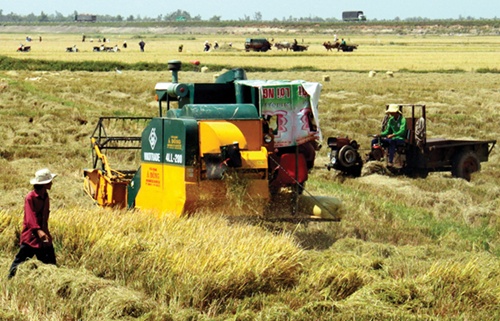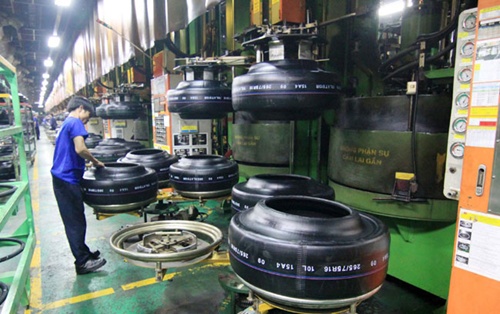Farming model increases profits, lowers emissions
Farming model increases profits, lowers emissions
Nguyen Thi Ngoc Huong, a farmer in Tan Hiep District of southern Kien Giang Province, has increased her profit from rice farming by 10 per cent since she applied a new locally developed farming model.

Some 500 farming households from An Giang and Kien Giang provinces have applied a new model to increase productivity, quality, and economic effectiveness. The model means they must used certified rice varieties, and they must use less seedlings, pesticides, fertilisers and water.
If strictly applied, the model would help them reduce post-harvest loss and greenhouse emissions, said Nguyen Van Sanh, Director of the Mekong Delta Development Research Institute.
Ngoc said the farming model required her to reduce 50 per cent of rice seeds compared to old method and use 30 per cent less fertiliser.
"I was quite worried at first, but after 40 days, the rice began to grow well. Our harvests have increased by 10 per cent each," she said.
Hoang Trung Kien, director of Kien Giang Province's Agriculture and Fisheries Extension Centre, said the farming model had brought about significant changes for local farmers.
"Trained farmers have begun to actively cut down on fertilisers, pesticides and water from 30 to 40 per cent compared to how much they used in the past," Kien said.
Phan Huy Thong, director of the National Agriculture Extension Centre, said with its more than 1.8 million hectares of rice farms, the delta contributed more than half of the country's rice output and 92 per cent of rice exports. But farmers' incomes were low due to high costs and unstable prices. Additionally, the old rice farming model produced a lot of greenhouse emissions.
"The overuse of chemical fertilisers and burning straw after harvest from traditional farming methods caused greenhouse gas emissions," he said.
National trademark
Sanh from the Director of the Mekong Delta Development Research Institute said he hoped the agriculture sector would bring the farming model to a new height to develop a "green rice" national trademark.
"In order to compete with rice from other countries like Thailand, India and Myanmar, Viet Nam needs to build its own national trademark," Sanh said.



















